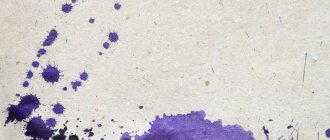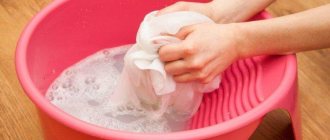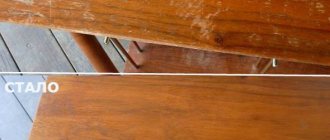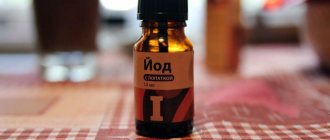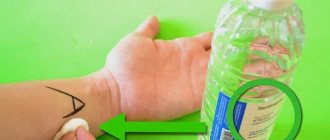The furniture combines hard and fabric coverings, which absorb permanent marker paint very well. To clean furniture, readily available products are used: acetone, alcohol, a mixture of toothpaste and soda, as well as special sponges and markers. Careful processing of any surfaces will preserve the color and structure of the body and fabric of the furniture, while the pattern will be completely dissolved and removed.
The victim of a permanent marker most often becomes something that is easily accessible - furniture. Moreover, not only the main frame, which is made of metal, wood or plastic, suffers, but also the fabric covering. Each part has its own cleaning nuances, especially for fabrics and hard surfaces - in the latter case, removing a mark from a felt-tip pen is much easier and faster. Below we will list how to wash markers from furniture.
Cleaning marker off hard surfaces
A permanent marker leaves hard-to-remove marks on furniture.
After drying, it is difficult to wash a permanent marker off furniture without the use of special compounds. It is intended for applying indelible notes on any surface, but the following recipes will help you remove it:
- Alcohol . You can use any product with a strength of more than 45 degrees, even regular vodka will do. To wipe off the inscription without a trace, soak a napkin in alcoholic liquid and treat the stain. Any remaining alcohol will dry quickly.
- Acetone . Effectively scrubs glossy and porous surfaces, but has a pungent, unpleasant odor. Apply it to the stain to remove it.
- Solvent WD-40 . It is used mainly by motorists, but also copes well with everyday problems. Rub the stain with a damp cloth, then blot dry with a cloth.
- Toothpaste and baking soda . Mix the components in equal proportions, apply to the stain, and after a while, using a rubbing motion, clean it with a napkin. If the solution doesn't work, add peanut butter and continue scrubbing.
- Vegetable oil . To remove felt-tip pen from wooden furniture, prepare a solution of olive oil and lemon juice. If the surface is varnished, use burdock extract or tea leaves.
When cleaning porous and rough surfaces, you can use soft bristle brushes or special sponges. Applying cream helps, including sunscreen, which dissolves the ink and is then removed with a napkin.
Cleaning hard surfaces does not pose any particular difficulties when using alcohol-containing compounds and solvents. It won’t take much effort, but the result will please you. The main thing is not to use abrasives or hard sponges.
Body and face cleansing
How to clean your hands from a felt-tip pen or marker? One of the following tips will help you.
Soap + water
While the old-fashioned soap and water method may require a little more time and effort on your part to remove marker marks, it will help remove the stain. Wet the stain with warm water. Then wipe it with soap. If using bar soap, apply gentle pressure as you wash until the marker dissolves. If you use liquid soap, help remove it with a sponge. Massage the skin until completely cleansed, then rinse with warm water.
Cream
Sunscreen will help wash off the marker. Of course, we are not talking about self-tanning, but about a classic remedy for protection against the negative effects of sunlight. Use cream, because milk or oil will not have the desired effect. Removing a stain from black or colored permanent paint is simple - apply it to the stain and wipe with a dry cloth.
Makeup remover
You can wipe off the marker using either liquid makeup remover or wet wipes designed for this purpose. They are sold in most drogerie stores and are very effective. To remove medium-large stains, 1 napkin is enough.
Alcohol solutions
If you knock out a wedge with a wedge, try using alcohol to remove the alcohol marker. It is important that the cleaning agent you choose contains as high a percentage of alcohol as possible. You can use medical alcohol or vodka. Do not use sweetened liqueurs, they will only make the situation worse. Dampen a sponge with the cleaning agent and gently wipe the stain.
Removing marker stains from upholstery
It is also not difficult to wash felt-tip pen from furniture upholstery, but the chosen method must be tested in an inconspicuous area. The reaction of the surface depends on the composition, color and type of marker, so try to clean a small area, and only after making sure that no traces remain, use the product.
You can wash off the stain with the following products, purchased or prepared yourself:
- For all types of upholstery fabrics, a special oxygen bleach for furniture Vanish or Chirton Oxygen in the form of a spray, foam or powder helps. It is simply applied to the contaminated area and removed with a dry cloth after 5 minutes. The product does not contain chlorine or other aggressive substances and preserves the structure of the fibers.
- satin fabrics with a mixture prepared from 1 tsp. lemon juice and 1 tbsp. l. milk, vinegar and borax. Apply the product to the surface and work it carefully.
- For thick and rough upholstery, use laundry soap. Grate a small piece or slice it with a knife, add a little water and rub the resulting pulp into the furniture upholstery. After 15 minutes, remove the composition with a brush, and wash off any remaining residue with a damp cloth.
- Light cotton fabrics can be cleaned with lemon juice. Squeeze a little of the citrus juice to cover the stain and leave for 5-10 minutes before scrubbing with a sponge.
- For a leather sofa , apply hairspray. Apply the stain for a couple of minutes, as a result it can be easily wiped off with a damp cloth. After this, it is advisable to treat the leather upholstery with wax or conditioner.
It is easier to remove any dirt while it is fresh. The more time has passed since the appearance of the pattern, the longer it will be necessary to keep the product applied to it and clean the area.
Remove traces of the marker carefully, do not rub it over the entire surface. If you clean it in a timely manner and choose the right product, there won’t even be any streaks left on the fabric.
How to remove marker from fabric furniture
The success of cleaning furniture with fabric upholstery depends on the material from which it is made.
Synthetic fabrics and cotton materials respond well to treatment with hydrogen peroxide. Moisten a small piece of cloth with this solution and rub the contaminated part. Change the fabric as it gets dirty. Next, you need to wash the area to be cleaned with any detergent. Then use a damp cloth to walk over the treated area.
You can remove markers from white furniture using bleach.
Follow the instructions and success is guaranteed.
If you know for sure that the scribbles on the furniture were left with a greasy marker, then use vegetable oil. This method will take several hours. Apply the oil to the stains, wait a couple of hours, then wash the desired area with dishwashing detergent, as it has a degreasing effect. After this, rinse again with clean water and leave until completely dry.
A mixture of alcohol and laundry soap can remove marker stains from fabric furniture. First, make a thick paste of alcohol and finely grated soap. Apply the mixture to the stains and leave for thirty minutes. After time has passed, remove the remaining mixture with a damp sponge.
–
Universal products for removing marker marks
Starwax is a universal stain remover for different types of furniture upholstery
. Some methods are suitable for any surface; they allow you to wipe off wax crayons from furniture, and wash off water- or alcohol-based markers. In Moscow you can buy solvents Starwax, Oxiline Super , which are quite gentle on the material and do not contain abrasive particles. They are effective, but have some contraindications, so when choosing, carefully read the manufacturer's instructions.
Hydrogen peroxide is a great way to remove markers from furniture without leaving scratches or streaks . Pour a few drops onto the dirt and after 15 minutes wipe with a dry or alcohol-soaked cloth.
In many cases, a regular eraser will help, and sometimes it is enough to erase the line with a damp baby wipe.
Any method requires caution and attention. Small dots and fine lines are best removed with a cotton swab or a special cleansing marker.
In addition to choosing the product, pay attention to the method of applying it. Even the most effective of them will damage furniture if you use a dirty rag.
Removing Permanent Ink
Permanent ink is usually very durable, but you can remove marks from it too. The following tools are suitable for this:
- Erasable marker for plastic board. It contains a solvent that removes traces of permanent ink in a few minutes. You need to paint them over with a marker, wait a few seconds and then wipe the surface with a clean sponge or paper towel.
- Sunscreen can be applied in a thick layer to the mark and rubbed in with a cloth or cotton pad. After a few minutes, the stain will begin to fade. Do not leave the cream on the surface too long, as it can damage it. It is enough to wait 10–15 minutes for the pigment to come off.
- Permanent ink can be removed from light fabrics using bleach. It is mixed with water according to the instructions on the package (it is recommended to use 1 tbsp per 3.5 l). The clothes are soaked for 10–15 minutes and then washed. It is important not to overexpose the item in bleach.
- Acne patches work great on hard surfaces by sticking them to permanent ink marks and then quickly pulling them away. Some of the paint will remain on the patch. If necessary, repeat the procedure.
- The well-known acetone also copes well with fresh stains. But after using it, it is important to ventilate the room. Apply a small amount of product to a cotton swab and rub the stain with it until it disappears. Then you can rinse the treated area with water.
- If you don't have any of the above remedies on hand, you can try erasing the permanent ink with a rubber eraser. It is difficult to guarantee results; such a product will help cope with the problem only on a smooth surface.
- To clean satin fabric from permanent ink, you need to mix 1 tbsp. l. milk and vinegar with lemon juice and borax (1 tsp each). Then apply the product to the stain, leave for 10 minutes, and then rub with a damp sponge until the ink marks disappear.
- For regular fabric, use lime or lemon juice. You can dilute it with water to reduce the acid concentration (1:1). Then apply the juice to the stain and rub it into the stain using cotton wool or a cloth. If necessary, you can repeat the procedure, and then rinse your clothes with plain water.
Preventing marker marks on furniture
It is much easier to protect the surface from dirt than to wipe off a pencil or remove an ink stain. Even when purchasing furniture, you should think about the possibility of its contamination during use. For children's rooms or offices, from the point of view of ease of care, it is better to choose tables and cabinets with smooth, non-porous or polished walls, into which ink or wax from a pencil will not be absorbed if handled carelessly. It is better to choose upholstery that is synthetic or has a water-repellent coating.
Bedspreads and covers save you from getting dirty. But if you can’t protect your furniture from traces of a marker or wax pencil, you can make cleaning it easier. For wooden surfaces, polishes are used for preventive purposes. They fill the pores and prevent dirt or paint from getting deep inside the array. Pronto products with beeswax, Mebelux, Chirton add shine and attractiveness and make stain removal easier.
For sofa cushions, inhibitors and impregnations are used to prevent dust and liquid drops from getting between the fibers. Thanks to this, any stain can be removed with a regular damp cloth. Scotch Gard Protector and Tex Guard are applied after cleaning, dry for about a day, and then the furniture can be used as usual.
Families with small children should order special furniture treatment that protects them from any dirt, even traces of felt-tip pens. It is advantageous to combine this procedure with dry cleaning, ensuring the preservation of the fabric for a long time.
Product classification
It is known that three types of markers are currently produced. They contain paints on different bases. The principle known in organic chemistry is suitable here - like dissolves in like.
- It will not be difficult to remove water-soluble paint. A damp sponge is suitable for these purposes. A soap solution will help you deal with it faster. If the marker left marks on clothing, washing with a stain remover will remove them.
- An alcohol-based dye will not stand up to a napkin soaked in vodka or another product containing alcohol.
- Oil compositions are exposed to a tampon with vegetable or essential oil. Then remove the remaining product with a dry cloth.
The general approach to solving the problem of how to erase a marker is clear and accessible for use. But it is worth considering the type of surface material that has been contaminated. There may be some pitfalls here. Before you start cleaning, it is wise to try your chosen product on an inconspicuous area. Another piece of advice: you need to start with the most gentle methods, gradually moving on to more aggressive substances.
Proper care of furniture
Upholstered furniture should be treated with a steam cleaner 1-2 times a month.
To extend the life of frame, and especially wooden furniture, regularly remove dust from it. Protect from contact with hot or cold objects, cover the surface with a tablecloth and coasters. When removing stains, do not use abrasive materials; apply with a soft, clean cloth or napkin.
Vacuum upholstered furniture at least 1-2 times a month and, if possible, use a steam cleaner. Try to destroy all stains as soon as they are discovered. While cleaning, carefully inspect the upholstery for any previously unnoticed dirt. In case of severe damage, it is better to order cleaning services, the cost of which is significantly lower than the cost of buying a new sofa.
Wipe products made of natural or artificial leather regularly with a soft, damp cloth, and refresh with beaten egg whites and water. To remove most stains, restore elasticity and add shine to the surface, apply a paste of starch and gasoline or damp coffee grounds. A vacuum cleaner is also useful for these materials - it will remove dust from the pores.
Regular care allows you to keep the furniture in excellent condition, keep the room clean and notice any stains or damage in time.
To make the table happy with cleanliness: remove stains from felt-tip pen, marker, iodine, glue, from hot
Everyone knows that good furniture is not a cheap purchase. Therefore, it is extremely disappointing when a caustic stain appears on a new product, which turns out to be quite difficult to remove. Don't rush to get upset.
Today there are many ways to quickly deal with this problem. Moreover, most of them are available for independent use at home.
I would like to note right away that there are two types of felt-tip pens:
My husband received his salary... I went to buy clothes for the children. If you don’t know what base the marker is made of, then don’t worry. Children and grandchildren often amuse themselves at home by drawing with a marker. Didn't know about this. I'll take note. Readers will be very grateful to you.
And the lines became only a little paler, I think from the intense “shuffling”. Repeat the procedure if necessary. If they are water-based, removing traces from them is as easy as shelling pears. The sooner you start removing stains from your skin after they hit your skin, the better the effect will be. But this measure is only for adults.
If the token type is unknown
If you don’t know what type of ink the stain was made with, you can use a universal remedy – toothpaste. In most cases, this oral hygiene product allows you to wipe off any type of marker; you just need to arm yourself with toothpaste, two rags and water. Then follow a simple sequence of actions:
- Make sure that the stain is in a horizontal position, if possible, then the paste will not flow down under its weight.
- Apply a thick layer of toothpaste to the stain left by a felt-tip pen on the furniture.
- Before you can wash off the paste along with the ink, you need to thoroughly rub it into the surface with a cloth.
- You need to rub in for 2-3 minutes. There should be enough paste to distribute it evenly over the entire area of the marker stain.
- Take a clean cloth, dampen it with water and wipe the paste off the surface.
